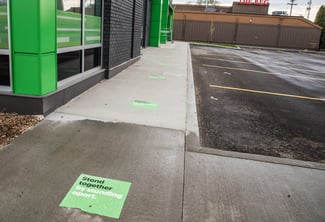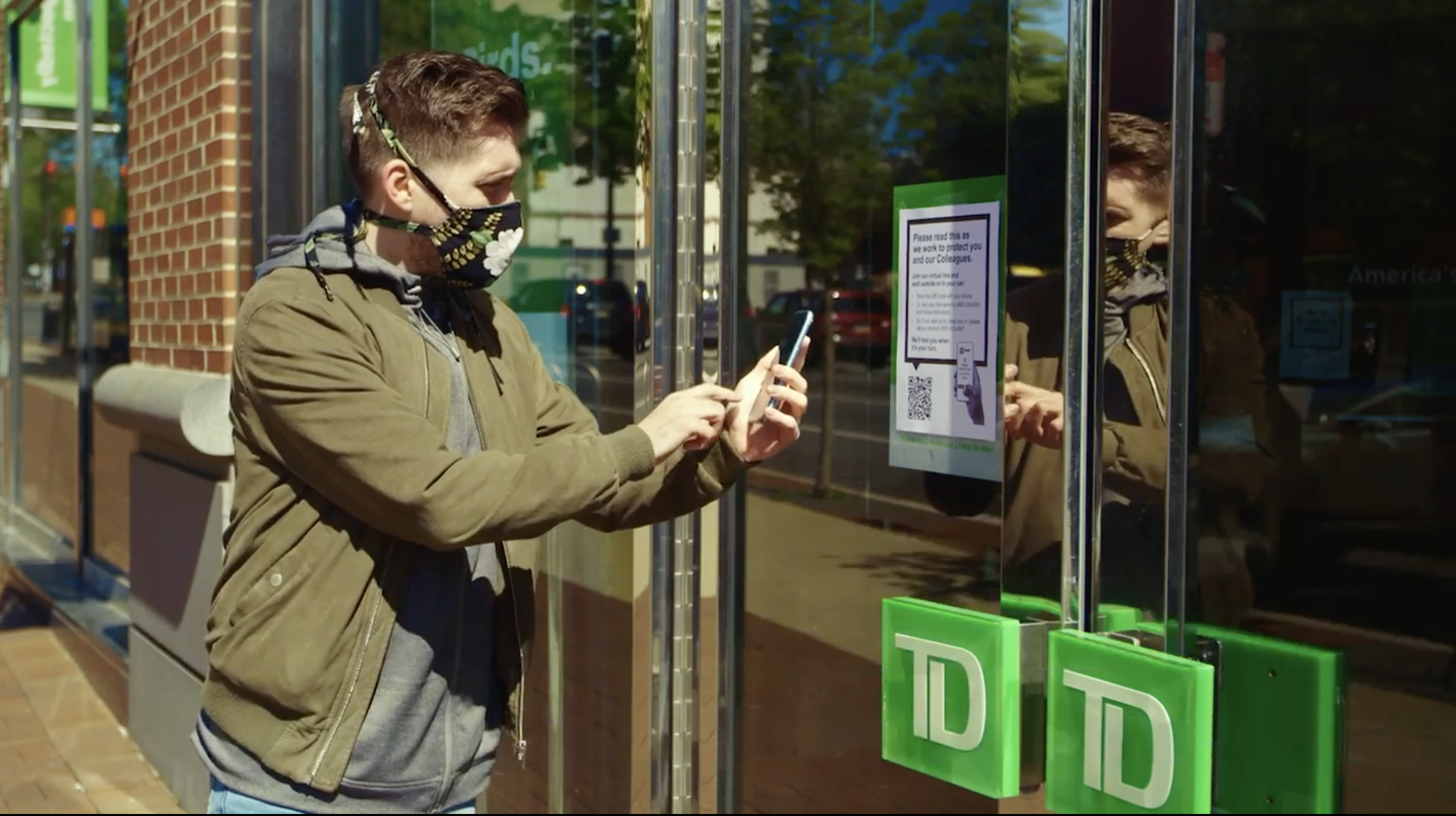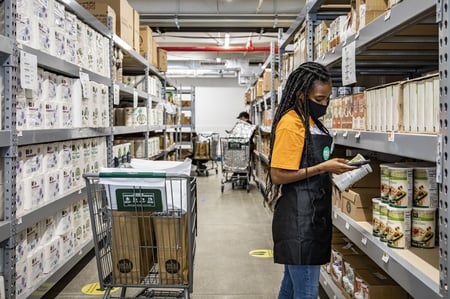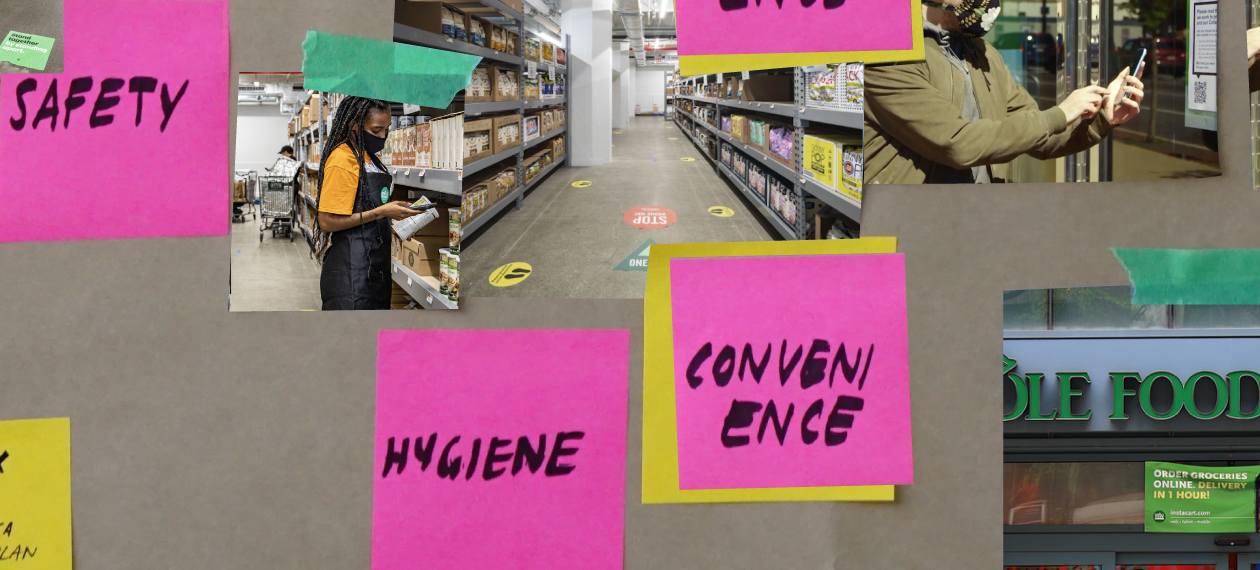Life may not have returned to any semblance of normalcy by any means, but retailers now need to turn their eye to what a post-pandemic reality will look like in their stores.
While life hasn’t been easy in 2020, the need to rapidly transform stores over these last few months will have provided valuable insight into what comes next.
Here, Martha MacInnis, AVP and Head of Retail Design & Experience for TD Bank Group, and Christine Sturch, Principal Special Projects Design Manager for Whole Foods, chime in on what the future might look like for their stores, how they're adapting on the fly, and how many of these changes were already happening anyway.
Banking in the Era of Plexiglas Barriers
Prior to COVID-19, TD Bank had been having a lot of conversations about very high-touch strategies that they felt needed to happen—a shift from transactions to advice and what that would mean in terms of creating more intimate experiences, working shoulder-to-shoulder with clients.
"Now we are literally creating physical barriers where before we were breaking them down," said MacInnis. "We're trying to make sure we're thinking very strategically about the temporary nature of these interventions we're putting in today so we can easily remove them or even switch them in and out as needed."

Social distancing decals at a TD Bank |
She said there is a lot of work happening to adjust the experience of visiting a branch to suit the times. As we've seen so many other retailers do, TD Bank has added Plexiglas dividers and decals on the floors to assist with queuing and physical distancing. There are long queuing lines to give ample space between customers and tellers. They have employees managing the queues, ushering through anyone who has checked in for an appointment on a mobile app. All non-teller transactions are appointment-based only, and customers must use their mobile check-in app for all appointments.
Prior to COVID, TD Bank had already been rolling out tools for virtual queuing, mobile check-in, and online appointment scheduling, but now these tools have expanded to include all transactions, including anything happening at the teller line itself. There is also an effort to migrate as many transactions as possible from the teller line to the ATMs, with clear dividers that still allow for conversations between employees and customers when customers need assistance. And because ATMs are high-touch surfaces, there are also plenty of sanitation stations nearby.
Redirecting transactional traffic to the ATMs also helps offset potential bottlenecking in the teller line, as these areas often tend to be confined and lack adequate space to install dividers, making it necessary for branches to operate with only half the teller staff. MacInnis said they are leveraging offices as much as possible, but there is certain equipment that tellers must be able to access that is only available in the teller line.
The lack of space and staffing limitations hasn't been too much of an issue, though: the bank has seen a decline in teller and ATM transactions since the start of the pandemic, so now they're having conversations about resetting branch spaces to accommodate the shift in business more towards advice and away from transactions. Ironically, that shift in focus from transactions to advice is still the bank's priority, just as it was prior to the pandemic; it's just that the motivations for doing so have changed.

For one-on-one banking appointments that occur inside of an office, there is a clear barrier on the desk separating customers from employees. But, for an organization that once used a photo of a plush armchair alongside the tagline "banking can be this comfortable" in its marketing, this physical barrier makes the experience of what can be a sensitive conversation a bit less friendly than they would otherwise strive for.
"That idea of comfort has changed quite a bit," said MacInnis. "Now we have to figure out how we adapt to this new way and also set ourselves up for the future. Flexibility and adaptability is key. Knowing now how quickly things can change, we need to be able to respond quickly and economically."
Inside the Post-Pandemic Grocery Store
For years, Whole Foods has been unique among grocery store chains for its extra status as a dining destination. Many Whole Foods locations introduced full restaurants that served the same kind of high-quality products that customers associate with the brand. Other locations opened taprooms where thirsty shoppers could grab a locally brewed craft beer and a small bite. And even those that didn’t offer full sit-down service still boasted the famous Whole Foods salad bar (and hot bar, and juice bar), a concept popular with the grab-and-go crowd as well as families going out for an affordable dinner where everyone could pick out what they wanted to eat.
All of those are closed now.
Grocery stores have seen a surge in pickup and delivery shoppers—that includes BOPIS customers as well as "pickers," employed by third-party delivery vendors, who do the shopping on behalf of customers ordering online and then deliver the completed orders to customers' homes. Whole Foods has been no exception to this.
Although the chain had plans to launch pickup in every store by the end of 2020, on March 15 the country shut down and within six weeks they had pickup available in every location—a project that was otherwise going to take 6-9 months to implement.
"As we quickly worked on expanding pickup and delivery services, part of my role was helping to optimize space to meet the delivery and pickup demand," Sturch said. "Some of our stores temporarily converted to online-only stores to fulfill delivery orders, and we recently opened our first permanent, online-only store in Brooklyn.”

Whole Foods' first dark store location in Brooklyn, NY |
This store will be used solely to fulfill online orders in the hopes of separating the pickup and delivery customers from those who still want to be able to browse, explore, and discover inside the store. It will also relieve the front-of-store congestion caused by pickup and delivery, where the restaurants, taprooms, and seating areas that once greeted customers were all flipped to accommodate online orders. And, perhaps in time, those full-service dining experiences can even reopen; although, Sturch said, they probably won’t look the same.
"In my opinion, the community table is something of the past. I think we’ll continue to see more two- and four-tops spaced six feet apart.”
Now that Whole Foods has begun to address the long-term management of pickup and delivery orders—plans they already had underway, albeit on a much longer timeline—their next course of action is to figure out how to get their popular food bars reopened…safely.
"I’m proud to work for a company that has been recognized as a top retailer for its COVID health and safety measures," said Sturch. "We are focused first and foremost on safety."
She added that it's not a matter of "if" the food bars will reopen, but rather "how." Those food bars, as much as the high-quality product selection, are part of what makes Whole Foods special. Sturch and her team are working to figure out how they can continue to offer those experiences that are unique to Whole Foods, but do so in the safest way possible.
The whole frontier of brick-and-mortar retail will forever be changed by COVID. But in many cases, the pandemic just escalated changes that were already happening. Retailers need to be adaptable and responsive, but also embrace the fact that some of these changes aren't temporary; they were inevitable.

Posted by
Physical Retail Reimagined.
RetailSpaces is a community for store development and design innovators.
March 29-31, 2026 | San Antonio, TX
Learn More!








Comments